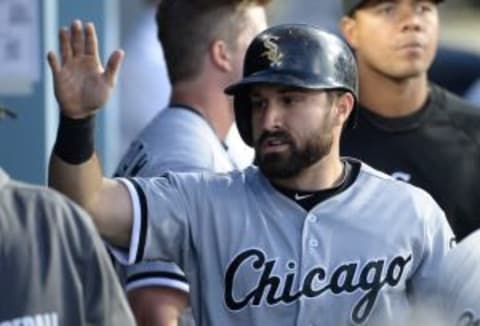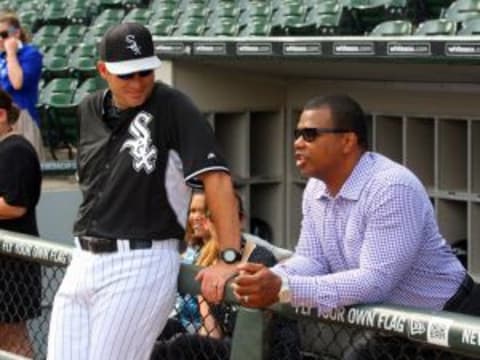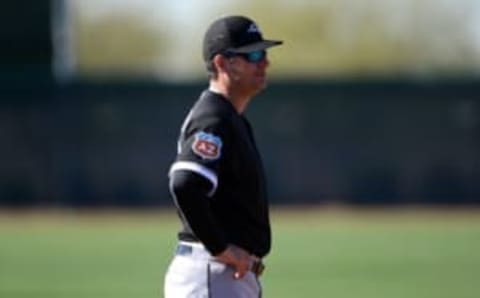White Sox need to contemplate exit strategy

After a 23-10 start, the White Sox have gone 11-26 since. With the trade deadline six weeks away, the White Sox have to make a decision on the Direction of their future. Add veterans to the nucleus or is it time to completely rebuild?
Once per year, the President of the United States steps up to a microphone at the Capitol and addresses the country in his State of the Union Address.
It is time for the White Sox management to take a step back and examine the big picture? Is it time to examine what the 2016 season has brought with it and what may lie ahead? White Sox nation are as irked and fragmented as they have ever been.
Is this an organization that needs an unprecedented overhaul? Should the front office double down on its championship pursuit? One common denominator is growing apathy.
The apathy runs from the fans to the boardroom, and on down to the man in the dugout. This organization has the propensity to hang onto dead weight like it’s the family dog that can no longer move.
Next: How 2016 has become a nightmare
There are four organizational themes plaguing the South Siders and one potential remedy.

How 2016 has become a nightmare
Chicago fans were quick to relish in the utter collapse of the Minnesota Twins. The Twins had a streak so bad that their owner called the young season a “total system failure.” The same system failure has penetrated 35th and Shields. The 23-10 White Sox, holders of the second best record in Major League Baseball, are a distant memory.
The nightmare began when Matt “Cat” Albers lost the first of his nine lives, four of which are remaining. The May 10th bullpen blow-up against the Texas Rangers was the turning point in a helium-filled season.
The White Sox have a 10-26 record since May 10th. They haven’t had an ounce of fortitude since Robin Ventura took the reins as manager.
All it takes to understand the pure fragility of this team’s mental state is to remember Adam Eaton‘s comments after a disastrous 2015. He said the season died after an 0-4 showing in Kansas City to start the year.
It seems like it took one blown lead to eviscerate the complete confidence of a team that appeared on its way to a playoff spot. The weeks that immediately followed the Texas loss saw defeats supported by a positive run differential. The tide has turned as of late.
The most recent losses have been blowouts. Starters are getting shelled behind a shaky bullpen and an offense that has the approach of a bad single-A club.
The carnage has not ended. This tailspin is still very much alive. The White Sox had a six-game division lead on May 10th turn into a (as of June 20) 5.5 game deficit. This marks the first nail in the coffin of playoff aspirations.
It’s going to take a lot to unpack the deficiencies that permeate this organization and have been central to the collapse of an otherwise promising year. The overarching theme is that it starts at the top.
Next: You say half measures, I say White Sox.

You say half measures, I say White Sox.
The White Sox had one of the strangest offseasons in recent memory. The front office had a variety of routes to take. Their moves would merely be a byproduct of how the market developed.
Even after the Brett Lawrie trade, they were in a position to take a step back if a tempting offer came across for one of their frontline arms. Did the acquisition of Todd Frazier end any questions regarding this team’s intended direction?
The White Sox had clear holes at shortstop, right field and designated hitter. There wasn’t a better match for about dozen quality free agents. The market seemed to play into their hands.
When the smoke cleared, the names on White Sox jerseys were Jimmy Rollins, Austin Jackson, Jerry Sands, and Mat Latos.
Displeasure rhymes with half-measures, and that’s the result of going “all in” while running out a median payroll.
Much has been written about the failed pursuit of high-profile outfielders. The forgiving optics say that their key targets simply stayed home. We’ll never have a complete picture of how Chicago’s offers stacked up against the field. Yoenis Cespedes didn’t take a discount.
Cespedes ‘deal was by far the best financial offer when factoring in the generous opt-out, present value, and risk reward of the deal.
General Manager Rick Hahn notably shot down rumors that the White Sox had a hard, three-year ceiling on all free agents. Maybe they did tack on a fourth-year option, but It’s hard to believe they didn’t offer him 4 years, $100 million ($25 million option for 2020, 2016 opt-out clause). That is about as player friendly of a deal you’ll see. That’s a deal the White Sox should have thrown on the table. The motivation was couched in capitalizing on a surplus of payroll space to supplement a win-now core.
Frankly, you can overpay for Yoenis Cespedes if you’re getting Chris Sale, Adam Eaton, Jose Quintana, and Jose Abreu long-term for mere pennies. Just the name of the game; no one ever said free-agency was efficient.

Ian Desmond, wound up going to the Texas Rangers on a one-year, $8 million contract. Any sort of one-year option tacked on gets him.
With Desmond, there was the attached draft pick compensation. The White Sox had to pick a lane. They did and turned the 26th overall pick into Louisville right-hander Zack Burdi.
Burdi may have near immediate utility in this window out of the pen. If the White Sox were willing to dash ceiling for a win-now draft pick, why not just get the win-now shortstop months earlier.
The payroll may have ballooned close to $150 million. The White Sox may have considered it had they known Adam LaRoche was going to quit. It was an investment worth making.
The organization seemed more keen on maintaining stable operating profits than investing in their product and boosting their record, and concurrently, future revenue streams.
Maybe Austin Jackson or Jerry Sands could have been:
Yoenis Cespedes: .284/.356/.572 (.928), 17 HR, 11 2B, 43 RBI
Maybe Jimmy Rollins could have been:
Ian Desmond: .311/.363/.500 (.863), 10 HR, 19 2B, 45 RBI
Displeasure rhymes with half measure, and that’s the result of going “all in” while running out a median payroll.
Next: The 'Right environment'

The “Right environment”
The blame starts with systemic failure across the board. The caveat is lamenting on missed targets is the convenient assumption that they would have played that well on the South Side.
The Chicago Tribune’s Colleen Kane left us with this after Ventura remained in the dugout following an underwhelming 2015 campaign:
In an announcement controversial among some fans disgruntled after another failed year, Sox general manager Rick Hahn cited Ventura’s communication skills and handling of his players as reasons for bringing him back during a meeting with the media Friday in the U.S. Cellular Field press box. While also acknowledging a need for tactical improvement, Hahn said the organization believes Ventura capable of making the changes needed to win.
In an argument on managerial value, even if you believe tactical decisions are negligible, there’s a whole other dimension to the job.
Ventura is a margin assassin. People often classify him as apathetic because of his nonchalant dugout demeanor, or lack of tangible fire. The way he deploys players and match-ups does all the talking.
It’s not hard to extrapolate apathy from his post-game comments. He often defends moves by saying the outcome was written in stone either way.
Either a true lack of feel or just ambivalence about taking the time to seriously consider deployment based on reverse splits, the hot hand, defensive profile, tendencies, or high leverage capacity.
Baseball is a game filled with nuances. Ventura hitting Jimmy Rollins second or playing Avisail Garcia in right field while the better defensive option erodes on the bench is beyond mind-boggling.
Managers don’t swing the bat or throw a pitch. It’s irresponsible to say they don’t have control over placing players in a position that’s best tailored to their strengths.
Placing the onus on Ventura is a lazy narrative. It’s an equally lazy narrative to claim the roster is poorly constructed. Its often said the projection systems weren’t bullish on the White Sox.
That’s a wild misconception. USA Today’s more crapshoot approach had the White Sox winning 90 games, while the analytically fueled ZiPs projections saw an 84-win team.
Eighty-four wins was a reasonable midpoint for this team. There’s often an expectation that the total can deviate by six or seven wins. A 90-win season was just as possible as another mediocre one.
These standard deviations are heavily reliant on the marginal facets of the game, which often fall on in-game tactics or the general culture of a ball club.
Ventura was admittedly poor tactically, but the front office liked the environment he created, one that was said to maximize the roster’s abilities.
“Maximize” has taken the shape of its antonym.
Next: Incubator for Underperformance
Incubator for Underperformance
If Ventura’s premium environment was to “maximize”and squeeze marginal talent out of fringe players like Latos, Sands, and Rollins, then that strategy has failed miserably.
This illustrates how roster deficiencies can be hidden or deployed in higher leverage. Robin chose the latter.
The lesser names like Sands, Latos, and Rollins fall mostly on the front office. This is a symptom of an unwillingness to spend. That falls on ownership, which is the highest point of the totem pole.

The vast underperformance is a confluence of multiple variables. Talent evaluation is a flaw of this organization. Much of the issue seems to be in advanced scouting. They have failed to identify major league targets or evaluating divisional opponents. This is the best way to explain perennial poor play against the AL Central.
It’s not all on Ventura by any means. To say he creates the “right environment” when there’s been the same script despite consistent roster turnover is the same as saying Yoenis Cespedes wouldn’t have been an upgrade over Jerry Sands.
Ventura’s tenure (2012-2016) has been an incubator for underperformance recent notable acquisitions:
Recent notable acquisitions:
Francisco Liriano (2012): 5.40 ERA over 11 GS. Liriano would go on to have excellent 2013-2015 seasons with the Pittsburg Pirates.
Jeff Keppinger (2013): .253/.283/.317 (.600 OPS). Keppinger would see his career die in Chicago at just 33 years-old.
Jeff Samardzija (2015): 4.96 ERA. 6.9 SO/9, led the league in hits allowed, home runs allowed, and earned runs allowed. Samardzija 8-4 with a 3.14 ERA since heading to the San Francisco Giants.
Adam LaRoche (2015): Coming off one of his strongest seasons, LaRoche hit .207/.293/.340 (.634) with just 12 home runs. He announced his retirement at spring training in March.
Melky Cabrera (2015): Cabrera is having a bounce back season. He had a .620 OPS in April and a .518 OPS in May of 2015, showing the most empty bat of his career. His rough start was a crucial contributor to a down Chicago offense.
Todd Frazier (2016): Also coming off a career year, Frazier is unrecognizable since donning a White Sox cap. The power has been there (19 home runs), but he has just 5 doubles through 66 games and an abysmal .198/.296/.449 line.
James Shields (2016): 4.28 ERA through 11 starts with the San Diego Padres. 21.81 ERA in 4 starts with Chicago.
Jerry Sands: .236/.276/.291 (.567 OPS). Robin often deployed Sands vs. his weaker RHP split and his line-up spot before his DFA was a cool 5th.
Mat Latos: 4.62 ERA over 11 starts. (3.7 BB/9 vs. 4.8 K/9). 5.52 FIP.
Next: Where to Go Next: An Exit Strategy
Jimmy Rollins: .221/.295/.329 (.624 OPS). Jimmy Rollins was regularly hitting in the 2-hole before his much applauded DFA.

Where to Go Next: An Exit Strategy
Just last week, Jerry Reinsdorf shot down Bruce Levine’s speculation that Chicago might put out a yard sign before the deadline.
As for the speculation in my story, Reinsdorf told me in his own instructive way that he had no plans for anything but a full-out attack on helping his front office find a way to win now.
This team is starting to look like a “seller.” The “full-out attack” could have occurred prior to Opening Day.
The White Sox have the worst record in baseball since Since May 10th, 10-26. That 36 game stretch is longer than the White Sox 23-10 record to start the season.
Which team is the real team?
They looked like an 84 win team to start the year. Their hot start gave them a cushion that made the playoffs all but a certainty. This is post-2012 White Sox baseball and regardless of who is in uniform, they have grossly underperformed their true-talent since they collapsed on September 19th, 2012.
It’s inexplicable, but a lack of answers doesn’t change the reality.
They have been outplayed by the Atlanta Braves, Philadelphia Phillies, Minnesota Twins, and Cincinnati Reds for a longer sample size than when they were actually competent. The Atlanta Braves are actively trying to lose. They’re fielding a quad-A team with the hopes of snagging this year’s top draft pick. They’re outplaying the White Sox over the last five weeks.
The Reds, who are in full rebuild mode and dealt slugger Frazier to White Sox, are outperforming the South Siders.
The Atlanta Braves are fielding a quad-A team with the hopes of snagging this year’s top draft pick, yet they’re outplaying the White Sox over the last five weeks.
How is a team in undisputed win-now mode is performing like a bottom feeder?
It’s not the how, but rather the what to do.
Players whose team control will be up following the 2017 season:
- Brett Lawrie
- Melky Cabrera
- Todd Frazier
These are also the top candidates to be dealt at the deadline with David Robertson (signed through 2018) also on the table.
The first move should be firing Robin Ventura. It should have happened yesterday. Rick Renteria would be the immediate replacement. The players have raved about him instilling fundamentals in them and per Jon heyman he’s made Chicago “as prepared as they’ve ever been.”
With a new voice and the margins not being pillaged every night by poor tactics, the White Sox might actually rebound.
If the team continues to underperform under Renteria, then the onus falls squarely on the front office to hit the reset button.
Next: The Contention Window

The Contention Window
This quasi-contention window always looked kind of weird. During a dismal 2013 season, the White Sox started to reshape the right way. They locked up their young pitching, spent big on Jose Abreu, and pulled off three savvy trades.
Adam Eaton was the only “hit” out of the Eaton, Garcia, Davidson trio.
This club looks a lot different if Garcia and Davidson weren’t busts. The White Sox can’t change the reality that they were. It has made this new window more artificial than it looks.
Veterans Jeff Samardzija, Adam LaRoche, David Robertson, Todd Frazier, Brett Lawrie, and Melky Cabrera were on-paper a solid way to supplement this young core.
Almost every single one of those players hasn’t lived up to expectations.
With the window expedited, 2016/2017 looked like the true contention period. They needed an overhaul to come after 2017. Lawrie and Frazier are young enough that had this group clicked, they could have been extended and 2018/2019 would have been in the cards too.
The issue is that it’s not clicking. The White Sox made a monumental mistake in not dealing Jeff Samardzija at last year’s deadline. They may consider dealing the likes of Todd Frazier, Melky Cabrera, and David Robertson, all figure to be hot commodities.
The concern is that they don’t pull the trigger on seller moves and go into 2017 with this same squad and Ventura at the helm once again.
It’s not like they can even double down on this group. The offseason to spend was last year. There’s very little help on the free agent market after 2016. They could go the trade route, but that further depletes a farm system that thins out after the top-end names.
It’s time for the half measures to end. If this club is in the thick of things this July, which they very well might be, then it’s time to grab names like Carlos Gonzalez and Aroldis Chapman and truly go for the hardware in 2016 and 2017. If they not, then the rebuild must begin. It can’t stop at Frazier and Robertson.
The whole organization needs an overhaul, from Williams on down. This includes advanced scouts who are beginning to appear like the hidden cancer people were overlooking. Rick Hahn is the man to lead this rebuild, and if you’re not high on him I’ll offer some praise.
Hahn is an MBA, former agent, and has a sharp mind. Every transaction he has made on paper has looked like a coup. Who ever thought it was possible to get Todd Frazier without giving up Tim Anderson. Jeff Samardzija for practically just Marcus Semien? Lawrie for scraps, and also outbidding everyone for the best closer on the block in free agency.
Even the calculus of the Addison Reed and Matt Davidson trade made sense. The James Shields trade was an on-paper steal, and while performance won’t show it, it was astounding they got him and $27 million for a starter they disliked and a teenage prospect that was years away.
I trust Rick Hahn with the cell phone and it’s time to make some calls.
The largest conundrum is whether to deal any of the young pitching. Considering a guy like Ian Kennedy just got $70 million, the Sale and Quintana contracts are invaluable.
There’s something to be said about keeping one of the two, and I wouldn’t be opposed.
Quintana and Eaton have enough team control (through 2020 and 2021 respectively) that they could theoretically be apart of the next wave that is likely to include Carlos Rodon, Tim Anderson, Carson Fulmer, and the recently drafted Zack Collins.
Maybe someone drops a Shelby Miller-esque package for Quintana. If a prior top three draft pick, controllable bat, and high-end prospect are all on the table, that’s something you look at.

Chris Sale is a generational talent, but the White Sox are entering a perfect storm.
The free agent market for pitching is beyond barren this year. If the Boston Red Sox call offering a haul of Yoan Moncada, Blake Swihart, Anderson Espinoza, and Sam Travis for Sale.
What if they center a package around Mookie Betts? What if the Dodgers are willing to part with Corey Seager?
Jose Abreu is under control through 2019, but he’s arguably at peak value. He’s rebounding this year and is on a bargain contract. Trading Abreu is going to net the White Sox at least one Top 50 MLB prospect, maybe two in the Top 100.
The general idea is that White Sox can pick two pieces to keep (Sale/Eaton, Quintana/Abreu, etc.) and can then leverage the rest or even all of Sale, Quintana, Eaton, Abreu, Frazier, Lawrie, Melky, and Robertson into likely baseball’s top farm system.
If the White Sox go another half measure in 2017, they are left with a continually aging core and less chips to cash in. A team with this volume of quality players has never authorized a major reboot. This kind of makes you question why they’re even in this position. If they did, it might make for a historic turnaround.
The appeal of multiple 90-100 loss teams and empty, cavernous stadiums is low. So is the appeal of consistent mediocrity and aimless direction. The latter is worse.
The Twins are proving that long, drawn out rebuilds aren’t always sure-fire successes. Not every team has a near 100-percent hit rate on their young targets like the Cubs. It’s an avenue worth exploring.
Next: Should White Sox Consider Firing Don Cooper?
The White Sox have always hung their hat on playing competent baseball, always making a concerted effort to be in the mix. That has brought them 63, 73, and 76 win seasons the last three years. It’s time for a team seeing the annual results of a rebuilding club to actually reap the benefits that typically come along with it.